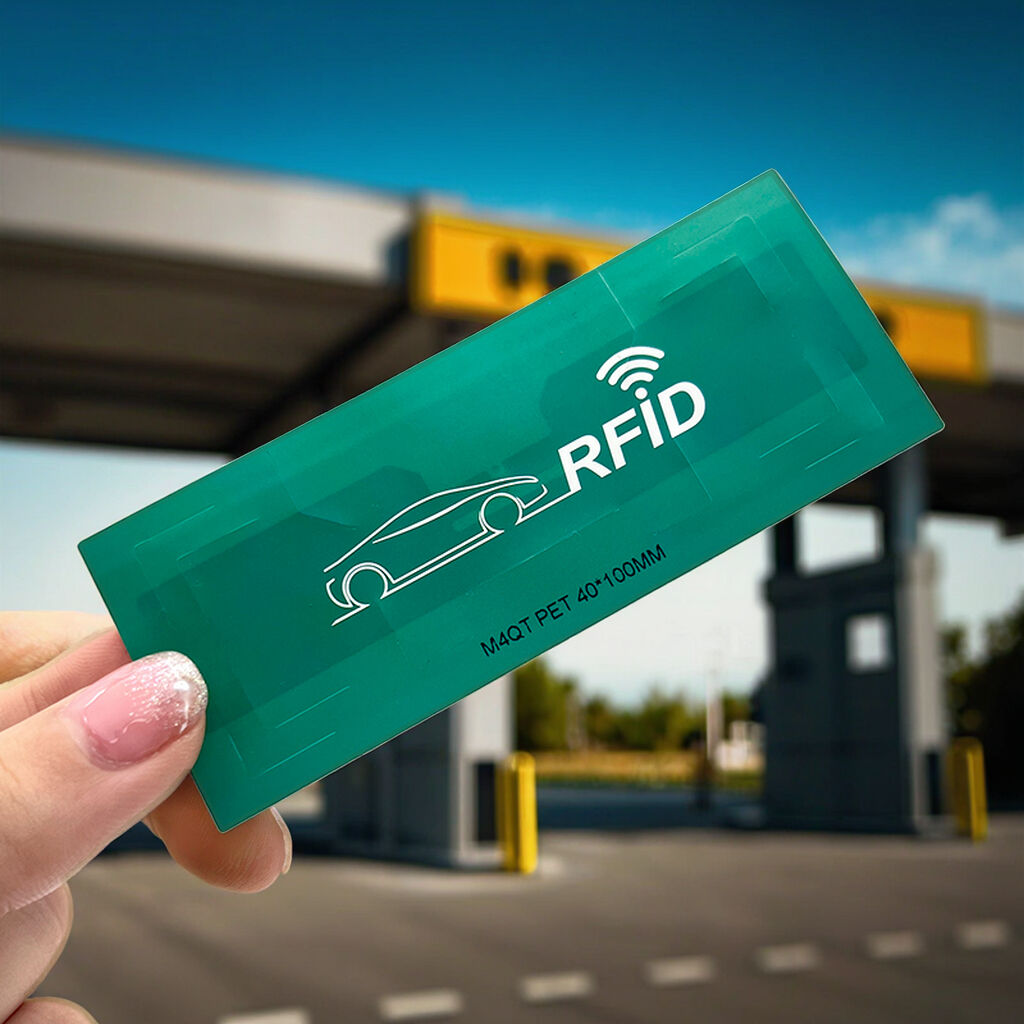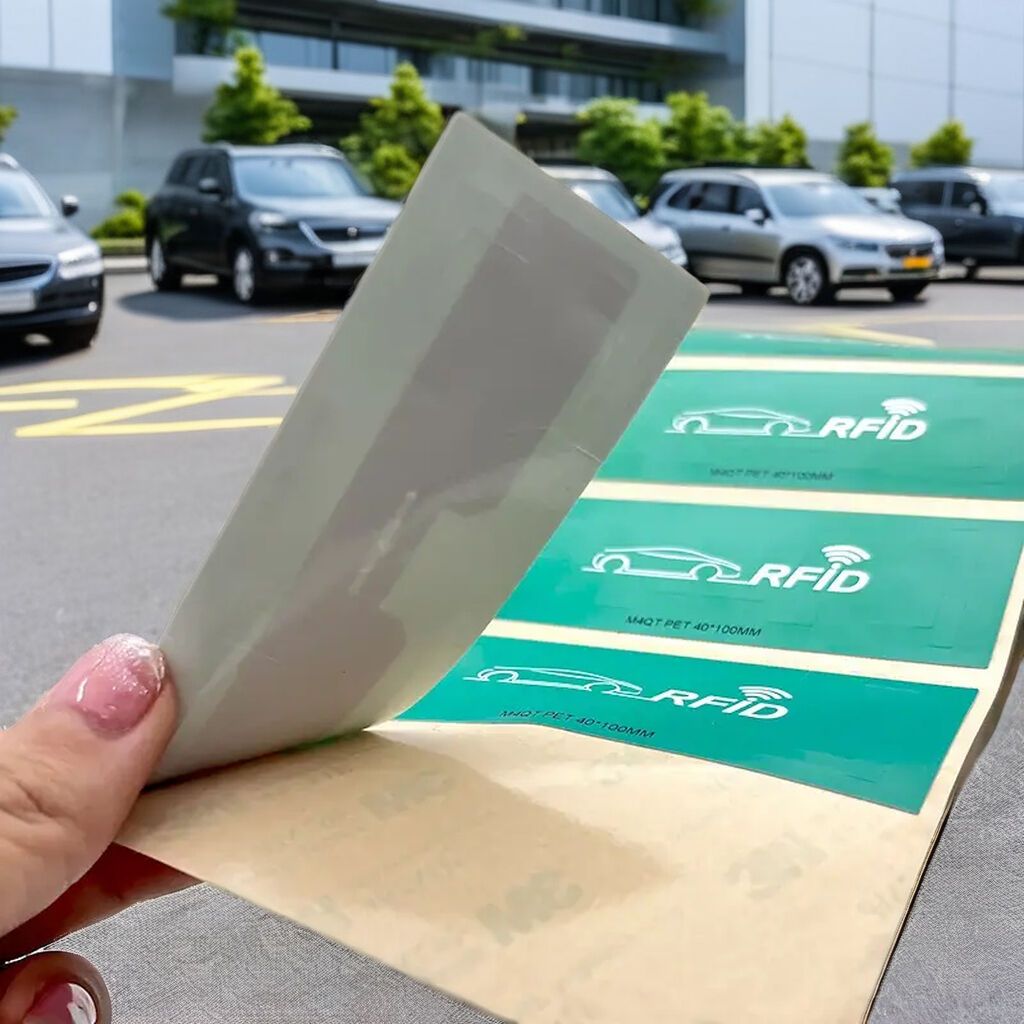What is an RFID Windshield Tag?
A windshield RFID tag is a smart electronic tag based on radio frequency identification (RFID) technology, embedded in the front windshield of a vehicle and designed to store and transmit data throughout the vehicle's life cycle, including factory information, owner information, insurance records, repair history, etc. Thanks to radio frequency signals in the ultra-high frequency range (860-960 MHz), the tags enable contactless data reading, allowing the system to quickly identify and control the vehicle. This technology does not require human intervention and is particularly suitable for use in high-speed traffic or complex environments such as parking management, logistics transport, and intelligent transportation systems.
Key features of RFID windshield tags
Effective recognition, fast reading
RFID windshield tags provide remote reading up to 10 meters, allowing vehicles to be quickly identified while traveling at high speeds without stopping. In addition, the tags support simultaneous reading of multiple tags, especially in fleet management scenarios. For example, in large logistics parks, the system scans the tag information of dozens of vehicles in a matter of seconds, significantly improving traffic efficiency.
High security
Each label is equipped with a unique global code (TID) that is protected against copying and unauthorized access, ensuring the authenticity and uniqueness of the vehicle's identification data. Thanks to its tamper-proof design, the label immediately loses its validity after removal, preventing illegal transfer or counterfeiting. This feature is particularly important in the management of expensive assets such as rental cars or government vehicles.
High interference resistance
These labels work well in challenging conditions, are waterproof, durable, and adapted to vibrations, temperature changes, and adverse weather conditions. A special coating and packaging design further enhance resistance to electromagnetic interference, ensuring stable operation in urban transport or industrial areas with high population density.
Large storage capacity
UHF windshield tags have a high storage capacity for large amounts of data, including vehicle information, driver identity, driving history, and even real-time sensor data. This provides full support for vehicle management, security checks, and access authorization.

Applications of RFID Windshield Tags
Vehicle traffic management
ETC highway: RFID tags support parking fees and authentication functions to optimize operations.
Automatic parking billing: Automatic recognition of vehicle information using tags, ensuring fast access and accurate billing, as well as reducing waiting times.
Access control for military and corporate parking: Ensuring access only for authorized vehicles, increasing security for military bases or corporate parking lots.
Managing the entire vehicle lifecycle
Tracking new car inventory at 4S stores: labels record the storage, display, and sales status of new cars, optimizing inventory management.
Verifying used car transfers: RFID windshield tags track acceptance, storage, maintenance, and removal
Storing historical vehicle data: Supporting the transfer process, and preventing trade disputes.
Recording vehicle repairs and maintenance: Integration with the maintenance system, tracking the maintenance cycle, and extending the vehicle's service life.
Control of special vehicles
RFID tagging on the windshield allows for automatic identification and registration of freight cars, weighing cars, and other vehicles from a distance. Combined with data exchange and background system analysis, it enables fast, non-stop transitions, vehicle counting, statistical calculations, etc., reducing labor costs and increasing the speed of construction sites or mines.

The difference between RFID and ETC
When it comes to vehicle management, RFID tags focus on vehicle identification, serving traffic management, asset tracking, and other scenarios; ETC (electronic toll collection system) is led by the Department of Transportation and focuses on toll collection.
In terms of data, RFID tags store more comprehensive data, including vehicle identification, insurance status, maintenance records, etc.; ETC is only linked to payment accounts and passage records, which limits the scope of data.
In terms of application scenarios, RFID is suitable for broader management needs, such as security and full lifecycle tracking, while ETC mainly serves toll stations.
As an RFID industry leader, Guangdong Xinye Intelligence Label Co., Ltd. provides customized RFID windshield label services, including antenna design, size modification, thickness adjustment, and optimization of reading and writing distances. Our high-frequency windshield labels are stable, can be read at a distance of up to 8-10 meters, and have a fragile antenna design that cannot be reused after being affixed to the vehicle's windshield, preventing unauthorized use. The stickers are made on a double-sided PET base, have good bending resistance, water resistance, anti-oil, tear-proof, and corrosion properties, support double-sided printing, and allow you to print a double code, barcode, and relevant vehicle information (e.g., vehicle number, owner's name) on the label surface, which can be visually seen both inside and outside the vehicle. In addition, we provide technical support to ensure smooth integration of labels with customer management systems to meet a wide variety of needs.